No products in the cart.
Nothing is more stunning than a centerpiece in the garden turning heads like the red hot poker plants. Another common name is torch lily, but it does not confuse them with the Liliaceae family.
These are gorgeous herbaceous perennials with tall flower spikes catching the eye. The real show stopper is the flowers blooming in bright colors as if kissed by the sun.
More About Red Hot Poker Plants
The red hot poker plant’s botanical name is Kniphofia, and it belongs to the family Asphodelaceae a South African native plant. The perennials are prized for their tall flower stalks in orange-red, red-orange, orange-yellow, and many other colors.
Some common names are torch lily, torch flower, Devil’s poker plant, and African flame. These are not true lilies; you find up to 60 species in the Kniphofia genus. Many of the cultivars these days are hybrids.
You can find them in dwarf varieties with clumping foliage that reach up to two feet high. A common species is the Kniphofia uvaria, which can reach up to four feet tall at a mature size. Still, they are rhizomatous perennials and considered invasive in some areas.
The red hot pokers attract bees, butterflies 🦋 and hummingbirds to the garden with their sweet nectar. The bloom time is from early spring to summer, and it is hardy in zones 5 to 9.
Red Hot Poker Plant Care
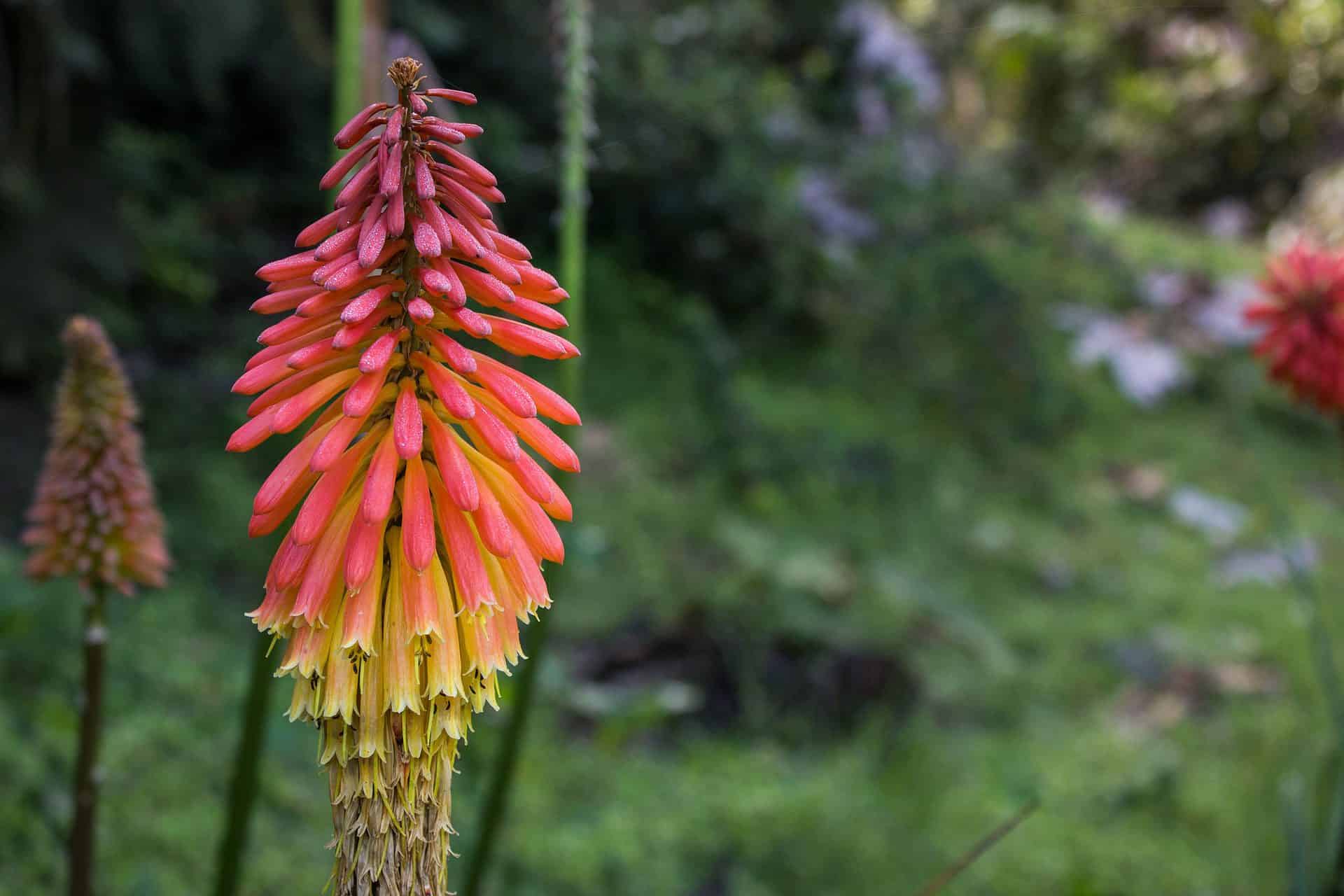
The red-hot poker is a repeat bloomer and does benefit from deadheading to encourage new blooms. Yet, the flowers fade at the lowest part of the stalks and dry out first, turning brown.
The fading progresses up the flower stalks until it reaches the top bloom and loses color. Still, remember this outdoor plant spread with underground rhizomes and can become overcrowded.
Also, check the invasive plant atlas to see if this plant is invasive in your area. Another important thing is that red hot poker is mostly grown in the ground, not in a container.
The Best Light For Torch Lilies
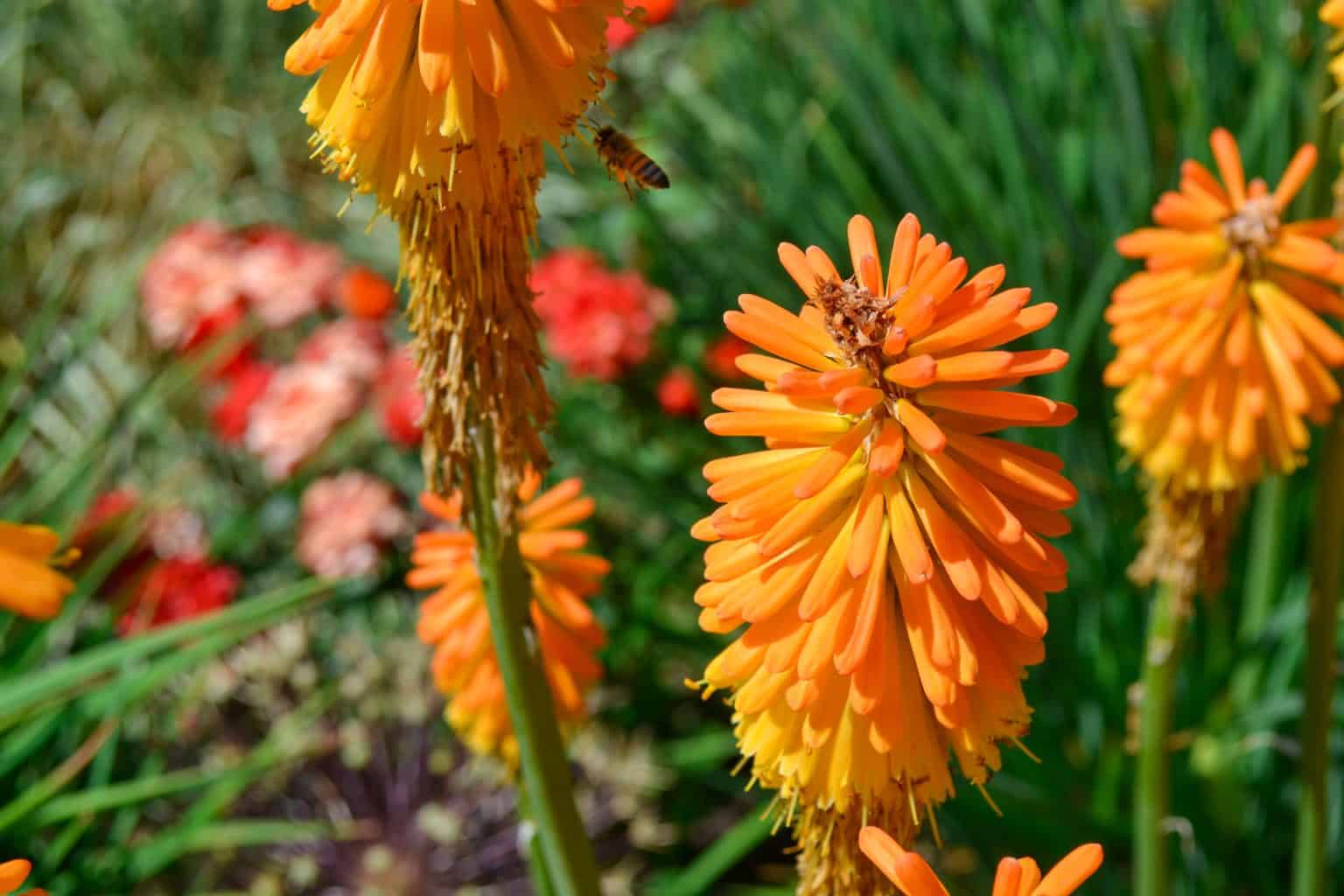
Grow red hot poker plants for the best results in blooming in full sun. The torch lily can tolerate some partial shade in the afternoon in hot climates. But they do need direct sunlight for flower production to display those tubular blooms.
Soil Moisture is Important For Young Red Hot Poker Plants
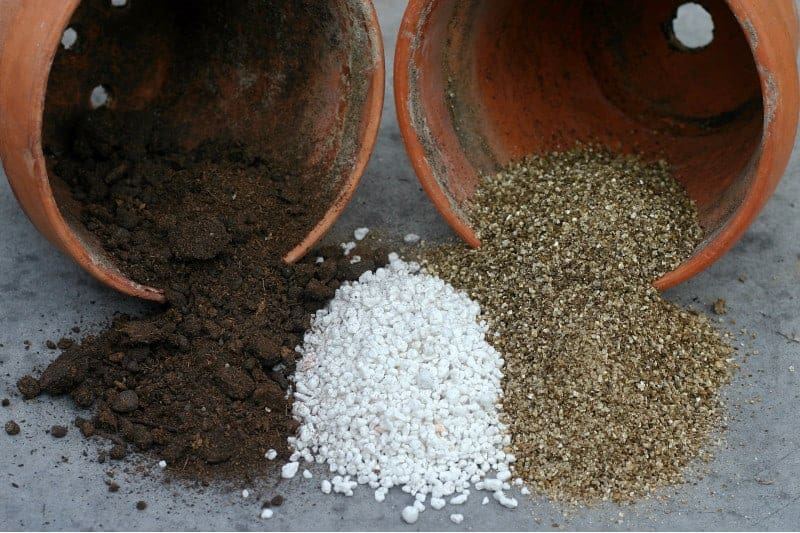
The torch lily can grow in many soil types. But the important thing is to provide your red-hot pokers with well-draining soil.
It is a tough perennial, but with poor drainage, it will die. The concern is that soggy soil becomes problematic in winter for these plants, and they develop root rot.
So, amend the soil as needed for good drainage. While it can grow in poor soil, adding some compost or organic matter helps.
Watering Red Hot Poker Plants
When watering your red-hot poker plant indoors, it only needs watering when you feel the soil dry—growing red-hot poker when young will need more water until established.
Still, most importantly, ensure it grows in well-drained soil to prevent root rot. The mature plants are more drought tolerant, but if you find in hot summers, the rainfall is less, we recommend watering your plants.
For winter care, you need not water much as the plant goes dormant. We recommend adding a layer of mulch to the base of the plant around the plants in cold climates o provide winter protection.
Temperature and Humidity When You Grow Red Hot Poker Plant
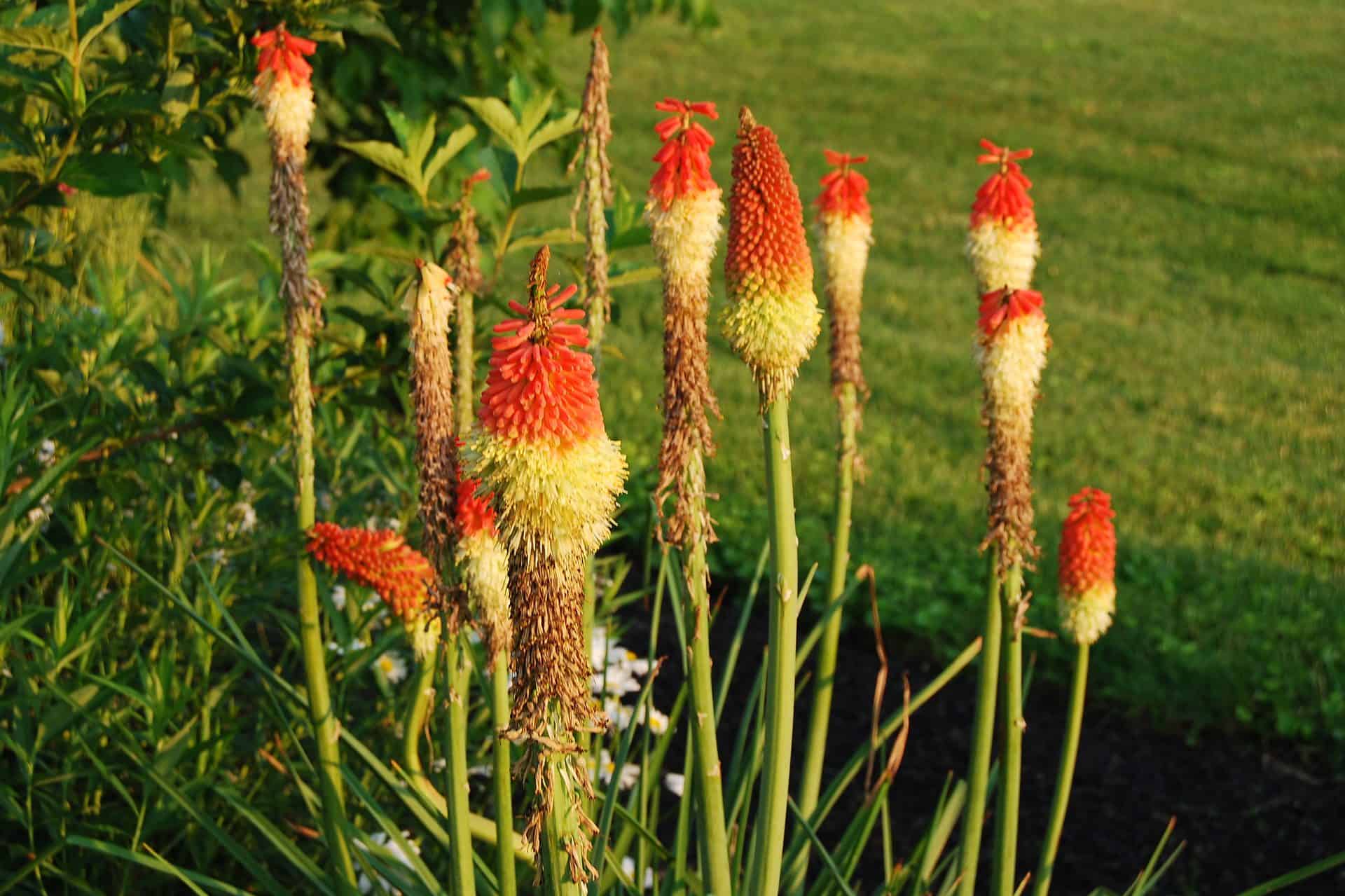
As a native plant to South Africa, torch lilies are hardy as far as the north USDA zone 5 when it has good drainage with mulch added through zone 9.
Still, in cold winters, you will need to winterize your plants by covering the crowns or using burlap around the plant. You can remove the organic mulch when spring arrives.
Another great thing you can do is bind the leaves, creating a protective cover for the crown and protecting the leaves from high winds.
Fertilizer For Red Hot Pokers
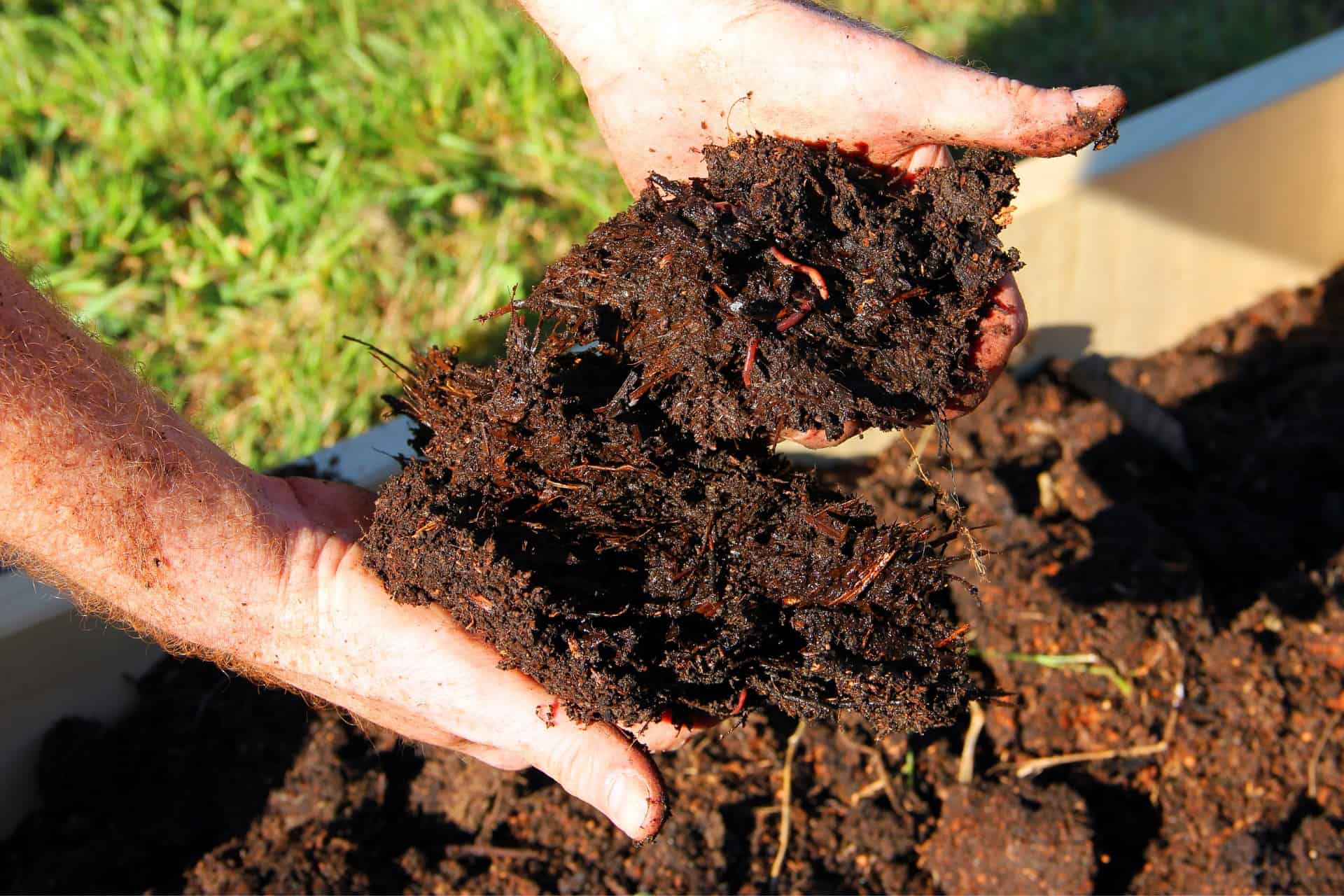
You need not fertilize your plants when you grow red hot pokers in nutritious soil amended with some compost. But if it is in poor soil, you can feed your torch lily a slow-release feed to help promote the blooms.
Maintenance and Pruning Kniphofia
When you live in cold winters, we recommend only pruning your plants in spring as the foliage protects them in winter.
You can trim your red hot poker plant after flowering when the flowers fade. When you remove the spent flower stalks, it helps encourage new growth and blooms.
Cut the flower stalks away from the stem using garden shears. You can cut flowers about 1 1/2 inches below it.
Propagating Kniphofia
To propagate your torch lily, you do it by dividing the rhizomes. First, you need to tease the clumps apart using your fingers and then divide them using a sharp spade. It would be best if you then replanted them immediately.
Remember to plant at the same soil level as the mature plant’s crown.
Another way to propagate is through the seeds. First, cut the flower heads when they fade and leave them to dry. Then break open the florets leaving the seeds to drop into a container. Place the seeds in the refrigerator for about a month.
Start your seedlings indoors for about eight weeks before transplanting them into the ground. Place the seed in potting soil and keep it moist to germinate. If you live in a warm climate, you can plant seeds in the ground.
Kniphofia Varieties
Most torch lilies make gorgeous cut flowers and grow well with other plants. Here are some favorite ones to choose from:
Red Hot Popsicle
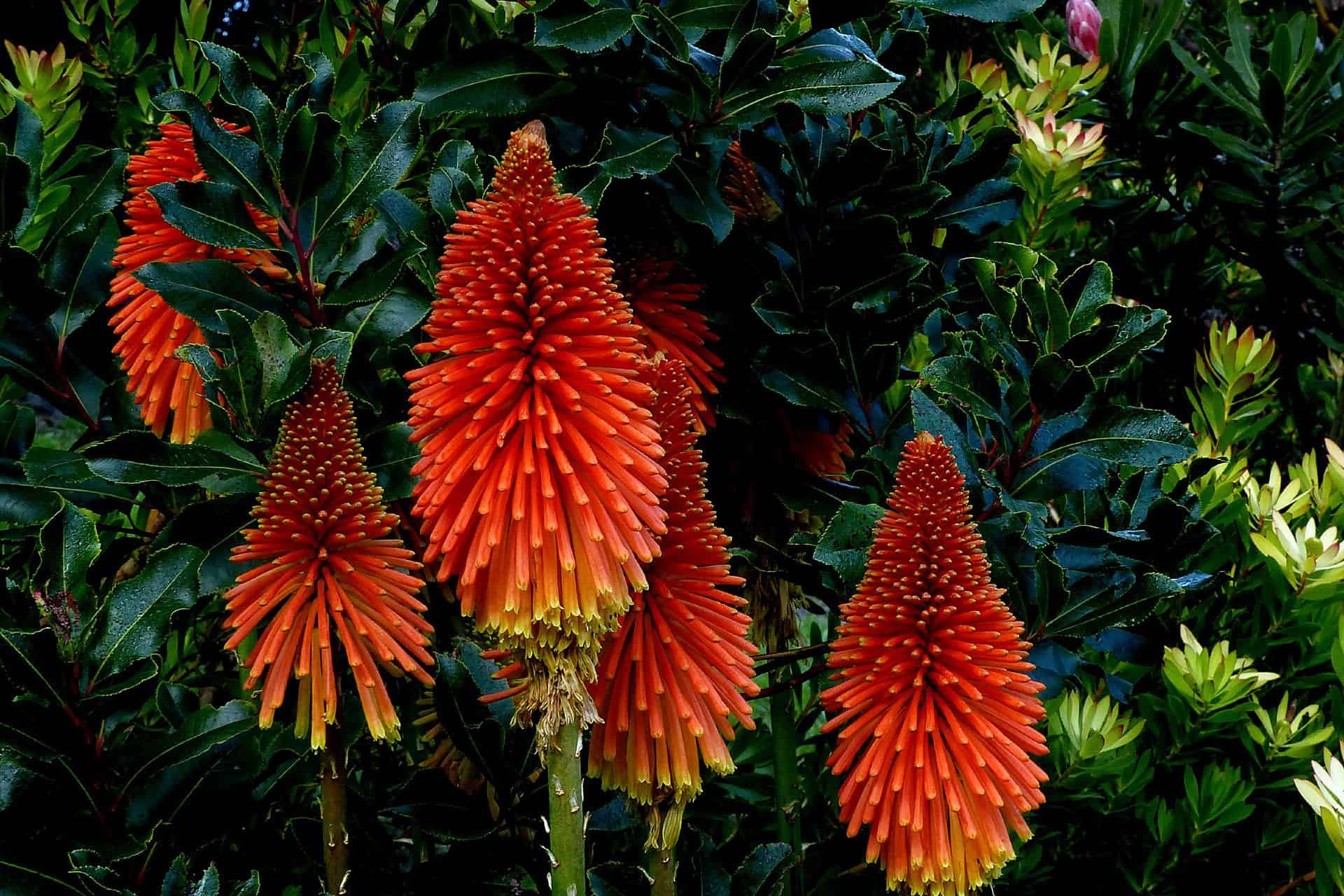
The dwarf cultivar grows only two feet tall with its flower stalks. You see a display of red flowers.
Pineapple Popsicle

It is similar to the red hot popsicle but only grows yellow flower spikes.
Mango Popsicle
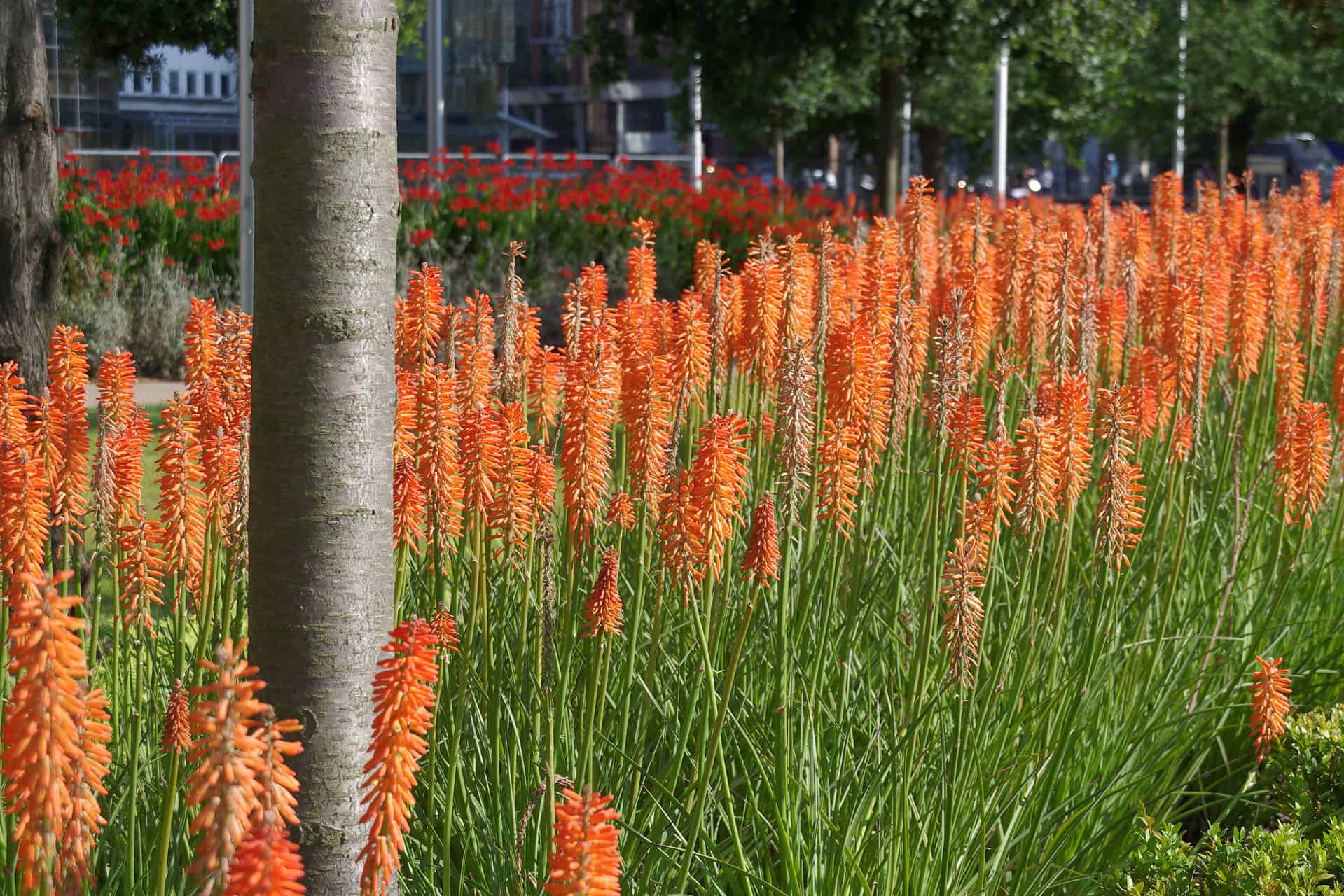
The mango popsicle displays orange flowers with some red in it at times.
Ice Queen
The lime-yellow that sometimes looks white on the flowering stalks looks fabulous, growing up to four feet tall and two feet wide.
Lady Luck
It is a tall variety growing up to five feet tall with white flowers.
Common Pests and Diseases
The most common pests on the torch lilies are thrips, but generally, the genus does not experience many concerns. The other problem is root rot developing from overwatering.
Frequently Asked Questions
When you remove the spent flower stalks about 1 1/2 inches below the flower, it helps encourage new blooms and growth.
You can grow the dwarf variety in pots but must divide them often to remain healthy. You may also not get as many blooms as when it grows outside.
Torch lilies can live a few years when dividing every few years as it helps expand their lifespan and prevents overcrowding.
You can buy the red hot poker plants here at Plantly and not go to the local garden center. Have your torch lily delivered to your home today.
Whether you want to buy, sell, or simply reach out to other plant enthusiasts, Plantly is the right place to be!


